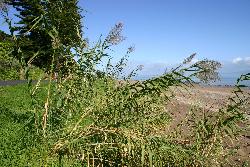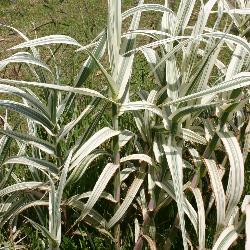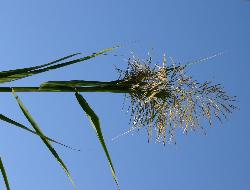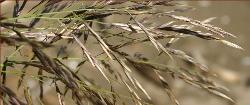- Taxon
- Weed
- Gallery
Habitat: bank, clay, cliff, coast, dry, gorge, lowland, margin, moist, open, pasture, ridge, riparian, roadside, rock outcrop, sand, scrubland, sheltered, shrubland, silt, slope, stone, tussockland, unstable/eroded, wasteland, wetland
Dispersal: Garden discard, seed, vegetative
Recognition
- a very large, reed-like, clump-forming, grass growing up to 8 m tall.
- its robust upright stems arise from short, thick, creeping underground stems.
- its leaves are very large (5-100 cm long and 1-8 cm wide), relatively narrow, and are sometimes variegated.
- its seed-head is a very large plume-like open panicle (30-70 cm long) that is borne at the top of the stems.
- the seed-heads contain numerous flower spikelets (8-15 mm long) bearing long silky hairs.
[From: Environmental Weeds of Australia]
Images
References
Biosecurity New Zealand 2012: Regional Pest Management Strategies Database. http://www.biosecurityperformance.maf.govt.nz/
Biosecurity New Zealand 2008: National Plant Pest Accord. MAF Biosecurity New Zealand, Wellington.
Howell, C. 2008: Consolidated list of environmental weeds in New Zealand. DOC Research & Development Series 292: 42.
Ministry for Primary Industries 23 Feb 2017: Unwanted Organisms Register. Version 02.01.02. https://www1.maf.govt.nz/uor








